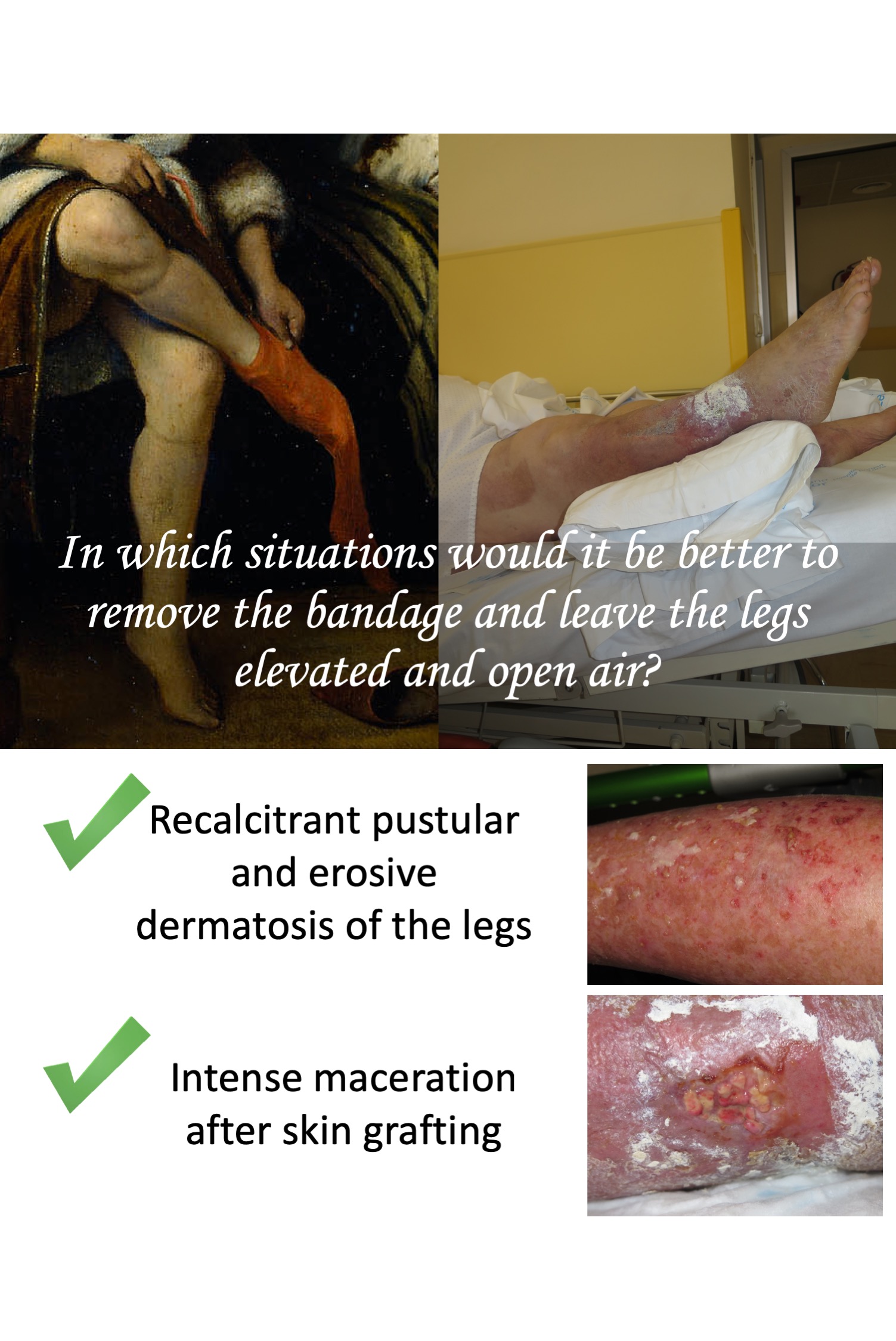The title of this post reflects the best therapeutic strategy for a person with leg wounds with poor evolution due to the occlusive effect of dressings and bandages.
Most of you will ask “when does this happen and how can we identify it?” Well, the answer, as is so often the case in the field of wounds, is not to be found in guidelines, books or published studies… But these are the two situations that I encounter with some frequency in my practice: treatment-resistant erosive pustular dermatosis of the leg and excessive maceration after punch grafting.

Perhaps this is the first time you have heard the term “Erosive pustular dermatosis of the legs”. However, despite being unaware of the existence of this entity, I am sure you have seen it more than once in your daily practice. In fact, I dedicated the following post “Pustular and erosive dermatosis of the legs: you may have seen a case without knowing it“. Its clinical presentation does not always help in the diagnosis, as although sometimes pustules or pustular lakes may be seen, it is normal for erosions to predominate, with or without scabs. Although its aetiopathogenesis is unclear, it usually appears in older women, in the context of chronic venous insufficiency and photoageing. It has also been associated with the occlusive effect generated by dressings and bandages. This is the reason why, despite adequate treatment with topical corticosteroid (treatment of choice), zinc oxide (see post “Bandages impregnated with zinc oxide: Unna’s boot and much more” ) and compressive therapy, in some cases there is no improvement.
With regard to punch grafting, sometimes, despite adequate compression and rest with the legs elevated, in the successive dressing changes during the first weeks we do not achieve complete epithelialisation, with excessive exudate and a “congested” appearance of the grafts.
Given that the problem in both cases is occlusion, the solution is to remove the dressings and bandages and leave the legs uncovered. To control the oedema in parallel, rest with the legs elevated is essential. In cases of erosive pustular dermatosis, topical corticosteroids of moderate-high potency should be applied daily (we can also add a zinc oxide drying solution or astringent solutions) and, in the case of wounds covered with punch grafts, our experience is very good with the application of zinc oxide drying solution once or twice daily.
In a few days with this strategy we can achieve a great improvement and we can go back to compressive therapy 😉
Also available in: Español (Spanish)






